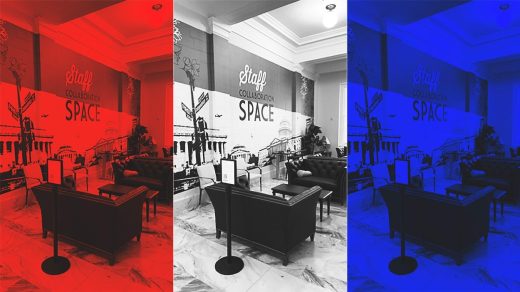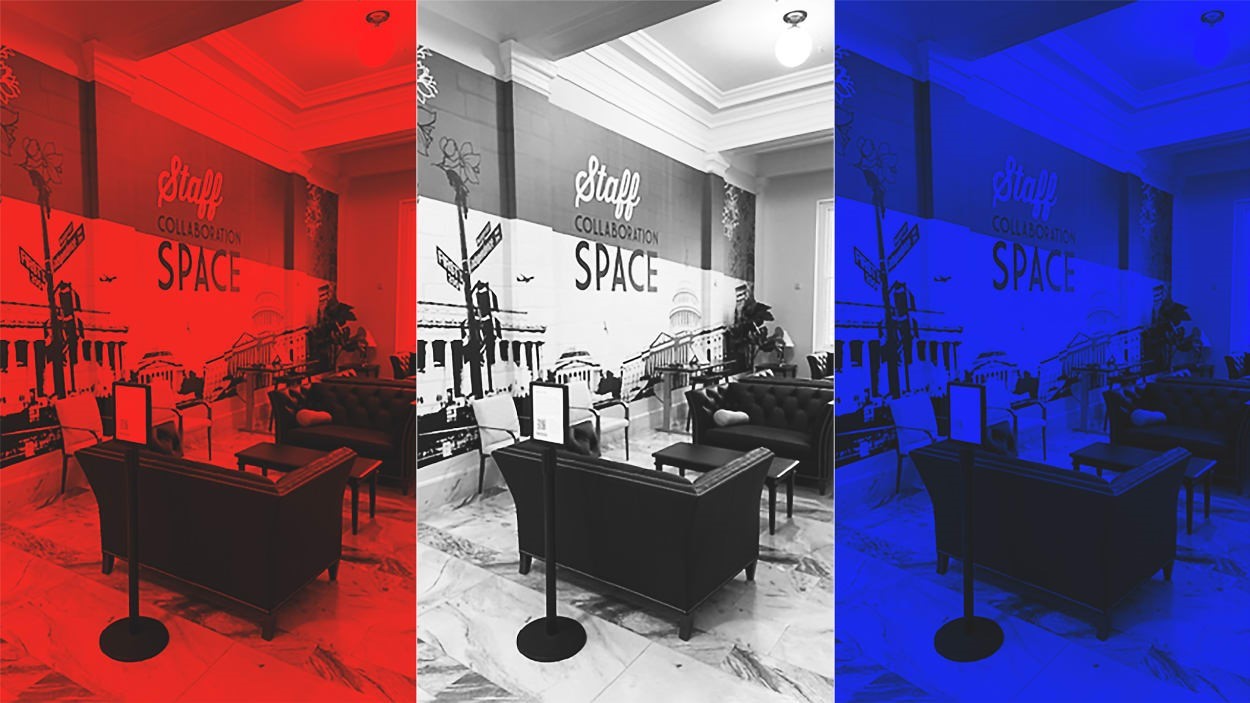This new congressional collaboration space looks like a millennial coffee shop
Lately, the business world has been consumed with designing the workplace of the future. There’s been talk about doing away with old forms, embracing high-tech innovations like VR helmets, and bringing workers closer to nature. Now, it seems, the design team at the U.S. House of Representatives has been doing the same thinking, with a new goal: Instead of getting workers back to the office, they’re trying to get Democratic and Republican staffers to literally sit down in the same space.
A tweet on Thursday revealed a “staff collaboration space” in the Cannon House Office Building. The new setup, created to encourage “cross-partisan interactions,” has all the trappings of a college campus coffee shop, including a bright blue accent wall, several (comically small) sofas, and one potted plant. The giant type on the wall, “Staff Collaboration Space” (which looks straight out of a pre-made Canva graphic) is the aesthetic cherry on top.
In the wake of two narrowly avoided government shutdowns in 2023 and another potential closure looming this year, the addition of the collaboration space seems a bit like rearranging the deck chairs on the Titanic. Could an area like this really make a difference toward fostering cross-partisan chats?
According to the tweet’s author, Kevin R. Kosar, a senior fellow at the American Enterprise Institute, the collaboration space is just one of many incremental steps to help the Congress operate better. It was set into motion by the Committee on House Administration’s Modernization subcommittee, a bipartisan group with an equal number of majority and minority representatives.
Some users on X (formerly Twitter) were skeptical of the idea, saying that it would be” the least used space in the building,” that adults should not “need a kindergarten style wall to draw and say nice things to each other,” and that “they put a WeWork in congress.”
“It’s a funny thing, so many folks bemoan the gratuitous squabbling between the two parties within Congress and ask, ‘Why can’t they just quit with the speeches and bickering and make policy?!’” Kosar wrote in an email to Fast Company. “So, the House takes bipartisan action to create a collaborative space for staff to work on legislative matters—and then a minority of Twitter/X users mock it. It’s . . . peculiar. I would think that the House taking another step to foster cross-partisan collaboration would be something to celebrate!”
And while the new collaboration space certainly isn’t boasting any VR technology or outdoor walkways, maybe it will be a tiny drop in the bucket toward a less dysfunctional House—or, at least, the site of a few staffer meet-cutes.
(18)



